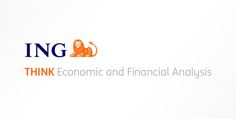Deere and Tractor Supply shares fall after Trump criticizes farm equipment prices
The US has announced new ’reciprocal’ tariffs (Canada, Switzerland and New Zealand are notable targets) while keeping the base rate at 10%. The muted market impact signals lingering expectations of trade deals and the much greater focus on data. Today, we expect payrolls at 115k and unemployment at 4.2%, which could lead to some consolidation of US dollar gains
USD: Tariffs Shrugged Off, Eyes on Payrolls
The US has unveiled new tariffs coming into effect on 7 August. The base rate for most countries has remained at 10% but other trading partners (like Canada, Switzerland and New Zealand) are hit with tariffs of up to 41%. Markets continue to treat this with some diffidence, probably on the view that deals are still likely to be agreed in the coming weeks. We don’t expect any meaningful implications for the US dollar in the near term.
A round-up of yesterday’s US data. The core PCE deflator rose 0.3% month-on-month as per consensus (0.26% rounded), failing to show any particularly concerning uptick just yet. Personal income and spending increased 0.3% nominally, with real spending up 0.1%. The employment cost index, a broad measure of labour costs, rose 0.9% quarter-on-quarter, slightly above the 0.8% forecast, leaving private wage growth at 3.5% year-on-year - consistent with 2% inflation over time. Initial jobless claims were largely unchanged, ticking up to 218k from 217k, while continuing claims held steady at 1,946k.
Overall, no data points were particularly market-moving, nor did they firmly argue for another leg lower in the US dollar. US dollar Index (DXY) ticked higher mostly on the back of the post-Bank of Japan yen selloff, but the US dollar was mixed against G10. In our view, the growth reassessment after the EU-US deal and the Federal Reserve’s hawkish stance is unlikely to have a lasting imprint: the FX market is fundamentally data-driven at this point.
Today’s jobs data presents the best chance for the US dollar to take an extra leap higher before some pre-CPI (12 August) calm leaves the US dollar exposed to medium-term bearish repositioning. Payrolls’ consensus is 104k, the whisper number is 120k, and our call 115k. Fed Chair Jay Powell has placed greater emphasis on the unemployment rate, which is expected to rise marginally from 4.1% to 4.2% - hardly enough to sound the alarm on the jobs market.
We expect a 115k, 4.2% scenario as only marginally positive for the US dollar. After this week’s big run, it could simply lead to some consolidation. ISM manufacturing for July is also released today and is expected to have ticked higher, but the impact on FX should be considerably more limited. The options market is pricing in a calm August: Chris Turner discusses FX carry trade risks and opportunities here.
EUR: Inflation to Prevent Further Dovish Bets
The eurozone flash CPI estimate for July is published today, following a sub-consensus 1.8% print released for Germany yesterday. Expectations are for a modest slowdown from 2.0% to 1.9% in the headline rate, with core unchanged at 2.3%. That may not be enough to trigger any serious dovish repricing of European Central Bank rate expectations, but equally, could prevent any residual cut speculation from being entirely priced out.
As discussed above, US jobs data may represent the best opportunity for a drop to 1.130 in EUR/USD before CPI figures later in August. The latest correction means that positioning is not as stretched on the long side for the pair, and the risks ahead of today’s releases are considerably more balanced.
Barring any surprises today, we think the next few days could see some support for EUR/USD and a potential retest of 1.150.
CAD: Further to Fall After Tariff Hit
As discussed in the USD section, new ’reciprocal’ tariffs are having little market impact. Canada deserves special attention in our view, though, especially after Mexico secured another pause extension yesterday.
Despite partial USMCA protection from the new 35% levy, we think markets continue to underestimate the downside risks for the Canadian economy. Expectations remain that the US and Canada will reach a deal, but progress on negotiations has been lacklustre so far and Canada’s recognition of Palestine as a state created another stumbling block.
Earlier this week, the Bank of Canada seemed to leave the door very much open to additional rate cuts if activity and/or the jobs market deteriorates. We see risks on both of these fronts, and 15bp pricing by year-end continues to appear overly conservative. We expect at least one cut by year-end in Canada, and target 1.40 in USD/CAD near-term.
Disclaimer: This publication has been prepared by ING solely for information purposes irrespective of a particular user’s means, financial situation or investment objectives. The information does not constitute investment recommendation, and nor is it investment, legal or tax advice or an offer or solicitation to purchase or sell any financial instrument. Read more
